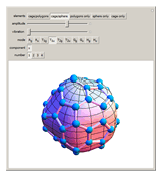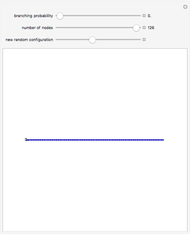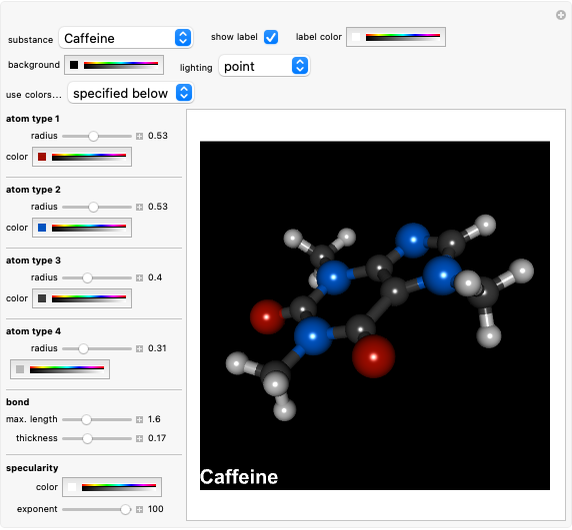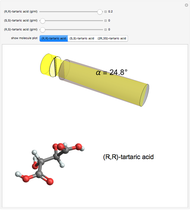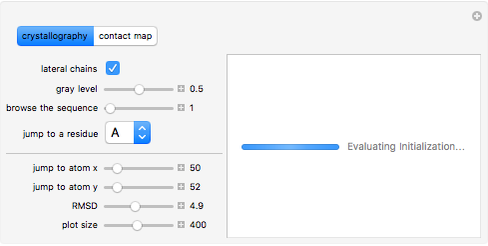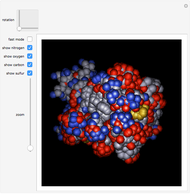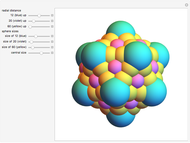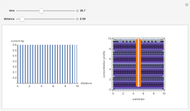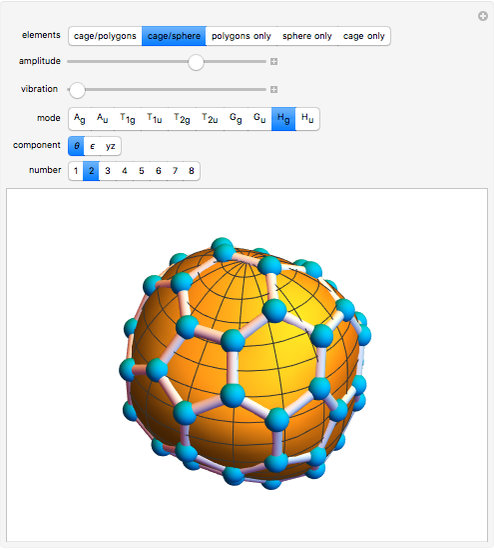Normal Mode Vibrations of Buckminsterfullerene (C60)

Requires a Wolfram Notebook System
Interact on desktop, mobile and cloud with the free Wolfram Player or other Wolfram Language products.
Buckminsterfullerene (the "buckyball") is a closed-cage molecule of 60 carbon atoms. There are 174 ways in which this molecule can vibrate such that each atom moves with the same frequency. These are known as normal modes. This Demonstration shows 88 of these normal modes, with an option to show possible corresponding distortions of the sphere on which the 60 carbon atoms lie when the molecule is at rest. The remaining 86 modes can be found by rotating various given modes about the  ,
,  , and
, and  axes.
axes.
Contributed by: Janette L Dunn (March 2011)
Open content licensed under CC BY-NC-SA
Snapshots
Details
The modes of vibration are labelled using group theory notation. There are 10 different labels for the normal modes ( to
to  ). All of the modes except
). All of the modes except  and
and  have more than one component, which look different but have the same frequency as each other. There are also up to eight modes of each symmetry (selected using "number").
have more than one component, which look different but have the same frequency as each other. There are also up to eight modes of each symmetry (selected using "number").
There are options here to view 88 of the normal modes. The remaining modes can be found by rotating images labeled  (for T and G modes) or
(for T and G modes) or  (for H modes) about the
(for H modes) about the  ,
,  , and
, and  axes.
axes.
The slider "vibration" can be animated to show the molecule vibrating. The maximum amplitude of the vibration can also be set. The range of allowed values is highly exaggerated compared to a real fullerene molecule.
As a guide to the eye, it is useful to fill the surfaces between the carbon atoms with polygons (pentagons and hexagons for the undistorted molecule), or alternatively to show distortions of a sphere on which the carbon atoms lie.
Permanent Citation


